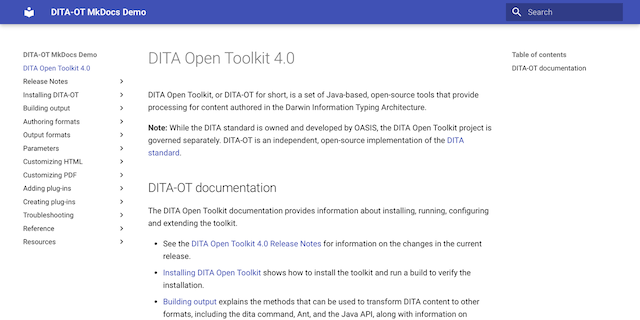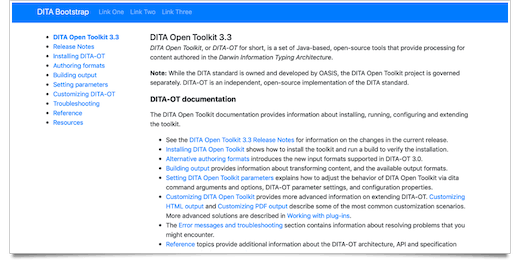DITA Open Toolkit Docs Process
At this year’s DITA Europe conference in Munich, I’ll be speaking about how the DITA Open Toolkit project uses DITA features and other open-source tools like Git, Gradle, Jekyll and Travis to build the toolkit documentation included in distribution builds and published on the project website at dita-ot.org.
By exploring how the DITA-OT docs are built, participants will see examples of recent DITA features in action, learn more about how the toolkit works, what they need to know to contribute to the project, and consider techniques that may be applicable to their own publishing projects.
Join us to learn how the DITA-OT project uses open-source tools and modern development techniques to publish the docs, including:
- Version control & collaboration
- Sample DITA features used in the docs
- profiling and (branch) filtering (expert/novice content)
- keys and key references
- subjectScheme classification for controlling available attributes
- extending topics with conref push
- XML mention domain
- Automatically generating topics from source code with Ant & XSLT
- Continuous integration
- Building the project website
The slides are available on Speaker Deck, and embedded here for convenience:


